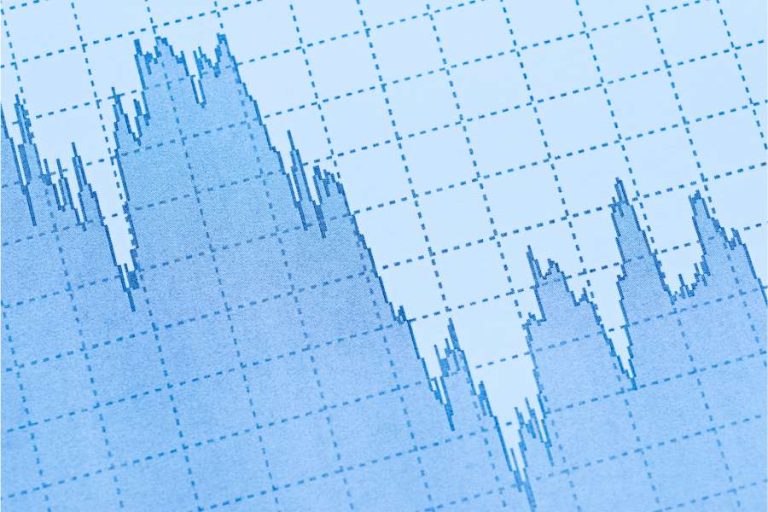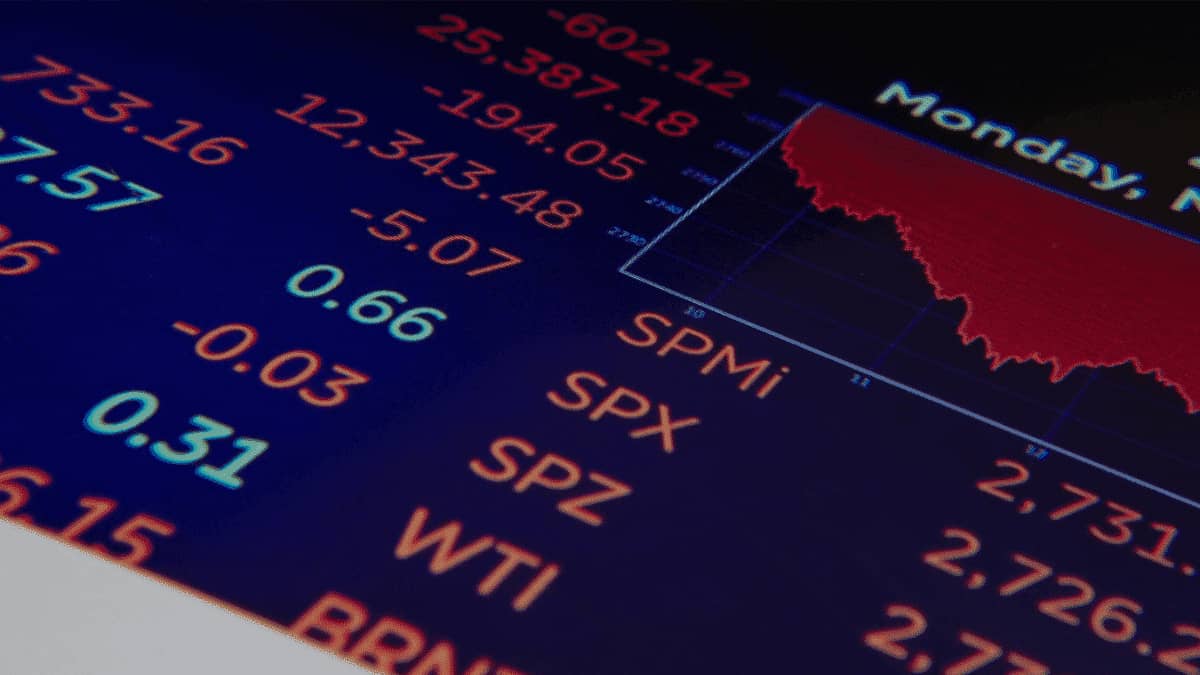MNQ futures, short for Micro Nasdaq futures, offers a more accessible option for individual investors to engage in trading the Nasdaq 100 Index Futures compared to its larger counterpart, Mini Nasdaq Futures.
This article aims to outline the trading specifics of Micro Nasdaq futures by comparing them to Mini Nasdaq futures, including contract size, margin requirements, and trading hours.
Micro Nasdaq VS Mini Nasdaq
Micro Nasdaq futures are essentially a scaled-down version of Mini Nasdaq futures. While NQ represents the symbol for Mini Nasdaq, MQN is the symbol for Micro Nasdaq futures. Below is a comparison of the contract sizes between the two variations of Nasdaq futures:
| Mini Nasdaq Futures | Micro Nasdaq Futures | |
| Contract Size | $20 × Nasdaq-100 Index | $2 × Nasdaq-100 Index |
| Contract Value | $360,000 | $36,000 |
In order to offer a clearer understanding of their contract sizes, the table above includes a column for contract value, representing the USD value of the two types of Nasdaq Futures when the Nasdaq Index is traded at 18,000.
The contract value of the Micro Nasdaq Futures is only one-tenth of the E-mini Nasdaq. By comparing their contract values of $360,000 and $36,000, the disparity is quite significant.
The amount of $360,000 is nearly unattainable for an average individual, whereas $36,000, although still substantial, lowers the threshold to a level that is more accessible to individual investors.
Micro Nasdaq Futures Margin Requirements
As mentioned earlier, MNQ futures provide an avenue for individual investors to participate in Nasdaq futures trading. The feasibility of this largely hinges on the margin required for Micro Nasdaq Futures.
The margin requirements for micro Nasdaq futures vary considerably based on whether they are traded intraday or overnight. Intraday trading occurs between 9:00 AM to 4:00 PM U.S. Eastern Time, while transactions outside of this window are considered overnight trading.
1. Micro Nasdaq Futures Margin - Intraday
Initial Margin: $487
Maintenance Margin: $439
For intraday trading of MNQ futures, the initial margin required is $489. This means investors must have at least this amount to open a position. To avoid margin call and forced liquidation, the account’s net equity must remain above the maintenance margin of $439 once a position is established.
The minimum margin requirement for Micro Nasdaq is $489, which is one-fifth of the initial margin of $1,974 for E-mini Nasdaq, despite its contract value being one-tenth of E-mini Nasdaq. Although not reduced by tenfold, the $489 margin requirement falls within an acceptable range for many individual investors.
Seeking lower margin options? Begin trading the Nasdaq-100 via CFD with a margin as low as $1. Click on 「What is NAS100 in Forex Trading? How to Trade US100 CFD on MT4/5?」 to learn more.
2. Micro Nasdaq Futures Margin - Overnight
Initial Margin: $1,947
Maintenance Margin: $1,770
The overnight trading margin for Micro Nasdaq futures is five times higher than that for intraday trading, matching the margin requirement for intraday trading of E-mini Nasdaq Futures.
While the initial margin of $1,947 may be acceptable for some individual investors, it still represents a significant capital requirement for many. The margin requirement for MNQ Futures is set by the CME exchange and futures brokers, who adjust the margin levels based on market volatility.
Additionally, the margin requirement for Micro Nasdaq futures may vary among different brokers. The margin mentioned above reflects the general requirement for U.S. Futures brokers with the NASDAQ index trading at 18,000 at the time of writing.
MNQ Futures Daily Fluctuation
Now that we’ve assessed the margin for MNQ futures, and found them acceptable for the majority of individual traders, let’s delve into whether it’s suitable for those with smaller capital from the perspective of daily profit and loss volatility.
Similar to E-mini Nasdaq, the minimum price tick for Micro Nasdaq is also 0.25 index points, but the tick value is only $0.50. Considering the daily average volatility of the Nasdaq Index at around 2%, which is approximately 360 points, the volatility of daily profit and loss for one Micro Nasdaq would be (360 x $0.50 x 4) = $720.
The daily average floating profit and loss of $720 may seem significant for individual investors, but it still falls within an acceptable range for many.
Micro Nasdaq Futures Symbol
As explained previously, the ticker symbol for Micro Nasdaq is MNQ, where MNQ represents ‘Micro NQ’, with ‘NQ’ being the ticker for mini Nasdaq.
In addition, each contract month is denoted by specific letters and numbers indicating the contract month and year. MNQ Futures are quarterly contracts, categorized into March, June, September, and December contracts. For example:
- MNQM4 represents the June 2024 contract.
- MNQU4 represents the September 2024 contract.
- MNQZ4 represents the December 2024 contract.
There are typically five consecutive quarterly contracts available for trading on the CME at any given time. However, the majority of trading volume tends to concentrate on the contract nearest to the present. As of April 2024, the nearest contract is the June 2024 contract, often referred to as the ‘front-month’ contract.
As shown in the screenshot from the official CME website above, the trading volume of the Micro Nasdaq front-month contract exceeded one million contracts, while the E-mini Nasdaq traded only 500,000 contracts on the same day.
From this perspective, Micro Nasdaq futures are more active and attractive to trade than E-mini Nasdaq. To put it in perspective, if we were to compare equivalent contract sizes, the daily trading volume of E-mini Nasdaq futures would be equivalent to 5 million contracts of Micro Nasdaq Futures.
Trading Costs of MNQ Futures
The trading costs for MNQ Futures, like those for Mini Nasdaq Futures, consist of two components: exchange fees charged by the CME exchange for execution and clearing, and brokerage fees. Below is a comparison of the trading costs for the two futures:
Trading costs of MNQ futures
Exchange fee: $0.35 per side | Brokage fee: $0.5 per side
Total trading costs = $1.7 per round turn
Trading Costs of NQ futures
Exchange fee: $1.38 per side | Brokage fee: $1.5 per side
Total trading costs = $5.76 per round turn
Upon initial inspection, it may seem that the trading costs for Micro Nasdaq futures are lower. However, considering that the contract size of Micro Nasdaq is only one-tenth of Mini Nasdaq, yet its trading costs amount to 30% of Mini Nasdaq, it becomes evident that Micro Nasdaq Futures are three times more expensive than Mini Nasdaq Futures in terms of costs.
Brokerage fees may vary depending on the chosen broker. The brokerage fees mentioned in this section are based on the average cost of selecting a U.S. based futures broker.
Micro Nasdaq Trading Hours
The trading hours for Micro Nasdaq Futures are exactly the same to the mini Nasdaq Futures, with trading available for 23 hours each day over five days a week. The trading hours for the MNQ futures in US Eastern Time are as follows:
- Opening Time: Sunday 6:00 PM
- Closing Time: Friday 5:00 PM
- Daily Session Break: 5:00 PM – 6:00 PM
Micro Nasdaq Vs Nasdaq CFD
Considering the details discussed earlier, while Micro Nasdaq may have a trading threshold and contract value acceptable to many individual investors, there are still some who may find it challenging to meet its trading requirements.
For investors seeking to trade the Nasdaq with lower thresholds, another option is to trade the Nasdaq 100 Index through Contract for Difference (CFD) instrument.
With a minimum margin requirement of just $1, investors can participate in the volatility of the Nasdaq 100 Index through CFDs. Click on the article below to learn more about Nasdaq Index CFD trading:
「What is NAS100 in Forex Trading? How to Trade US100 CFD on MT4/5?」






